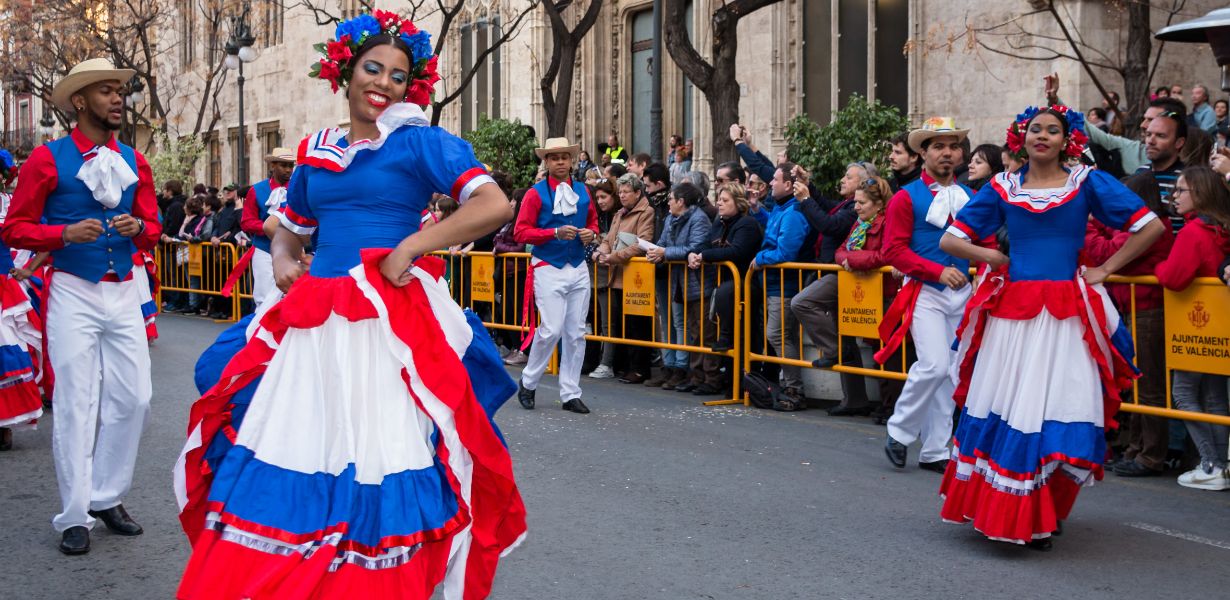
Merengue, a dance of jubilant spirits and lively rhythms, encapsulates the spirit of the Dominican Republic. Rooted in history and embraced by generations, merengue is more than just a dance; it’s an expression of joy, a celebration of unity, and a testament to the rich cultural heritage of the nation.
Origins and Evolution of Merengue Dance
Exploring the Roots: The origins of merengue trace back to the early 19th century, emerging from the fusion of Spanish, African, and Indigenous influences. This blend of cultures birthed a dance that embodies the heart and soul of the Dominican people.Evolution and Modernization: Over time, merengue has evolved from its humble beginnings in rural areas to a mainstream phenomenon. Today, it boasts various styles and interpretations, captivating dance enthusiasts worldwide.
Merengue Music: The Rhythmic Heartbeat
A Melodic Journey: Merengue music, characterized by its lively tempo and infectious rhythms, serves as the heartbeat of the dance. Rooted in African percussion and accompanied by instruments like the tambora and accordion, the music creates an irresistible urge to dance.Lyricism and Themes: Beyond the melodies, merengue lyrics often explore themes of love, joy, and everyday life. These heartfelt lyrics add depth to the dance, creating an emotional connection between the dancers and the audience.
Dominican Republic’s Dance Culture: Beyond Merengue
Bachata: The Emotional Partner: In the Dominican dance landscape, bachata stands as a close companion to merengue. Known for its emotional depth and intimate connection, bachata’s rise to global prominence has added another layer to the country’s dance culture.Cultural Celebrations: Dance isn’t just an art form in the Dominican Republic; it’s an integral part of festivities and cultural events. Carnivals, festivals, and social gatherings often feature merengue and other traditional dances, showcasing the vibrant spirit of the nation.
Merengue’s Impact on Identity and Unity
Cultural Identity: Merengue has transcended its status as a dance; it’s a symbol of Dominican identity. It unites people from all walks of life, transcending social boundaries and fostering a sense of togetherness.Global Influence: While deeply rooted in the Dominican Republic, merengue’s influence has spread beyond its borders. From Latin America to Europe and beyond, this dance has left an indelible mark on the world stage.
Preserving Tradition: Challenges and Future
Modern Challenges: As with any tradition, merengue faces challenges in the modern era. Amidst global influences and changing cultural dynamics, efforts to preserve the authenticity of merengue continue.Future Outlook: Despite challenges, merengue remains a vibrant force in the Dominican Republic. Through dedicated artists, cultural initiatives, and the passion of the people, merengue’s legacy is being safeguarded for future generations.
Final Words
Merengue isn’t merely a dance; it’s a heartbeat that resonates with the Dominican spirit. From its humble beginnings to its modern interpretations, merengue weaves a tale of joy, unity, and cultural pride. Its music ignites passion, its rhythms inspire movement, and its history enriches the nation’s narrative. In a world of evolving cultures, merengue stands as a timeless testament to the power of dance to transcend borders and connect hearts.
Commonly Asked Questions:
Q1. What is the origin of merengue dance?
Merengue’s roots can be traced back to the Dominican Republic in the early 19th century. It emerged as a fusion of Spanish, African, and Indigenous influences, creating a unique dance form that reflects the nation’s diverse cultural heritage.
2. How does merengue music contribute to the dance?
Merengue music is the heartbeat of the dance, characterized by lively rhythms and infectious melodies. It sets the pace and mood for the dance, inspiring dancers to move in sync with its vibrant beats.
Q3. What role does merengue play in Dominican identity?
Merengue is more than just a dance; it’s a symbol of Dominican identity. It unites people from different backgrounds, fostering a sense of belonging and pride in their culture.
Q4. How has merengue evolved over time?
Merengue has evolved from its rural origins to a mainstream dance form with various styles and interpretations. It has adapted to modern influences while retaining its core essence.
Q5. What is the significance of merengue in cultural celebrations?
Merengue is an integral part of Dominican cultural celebrations, such as carnivals and festivals. It brings people together, adding a festive and joyful atmosphere to these events.





